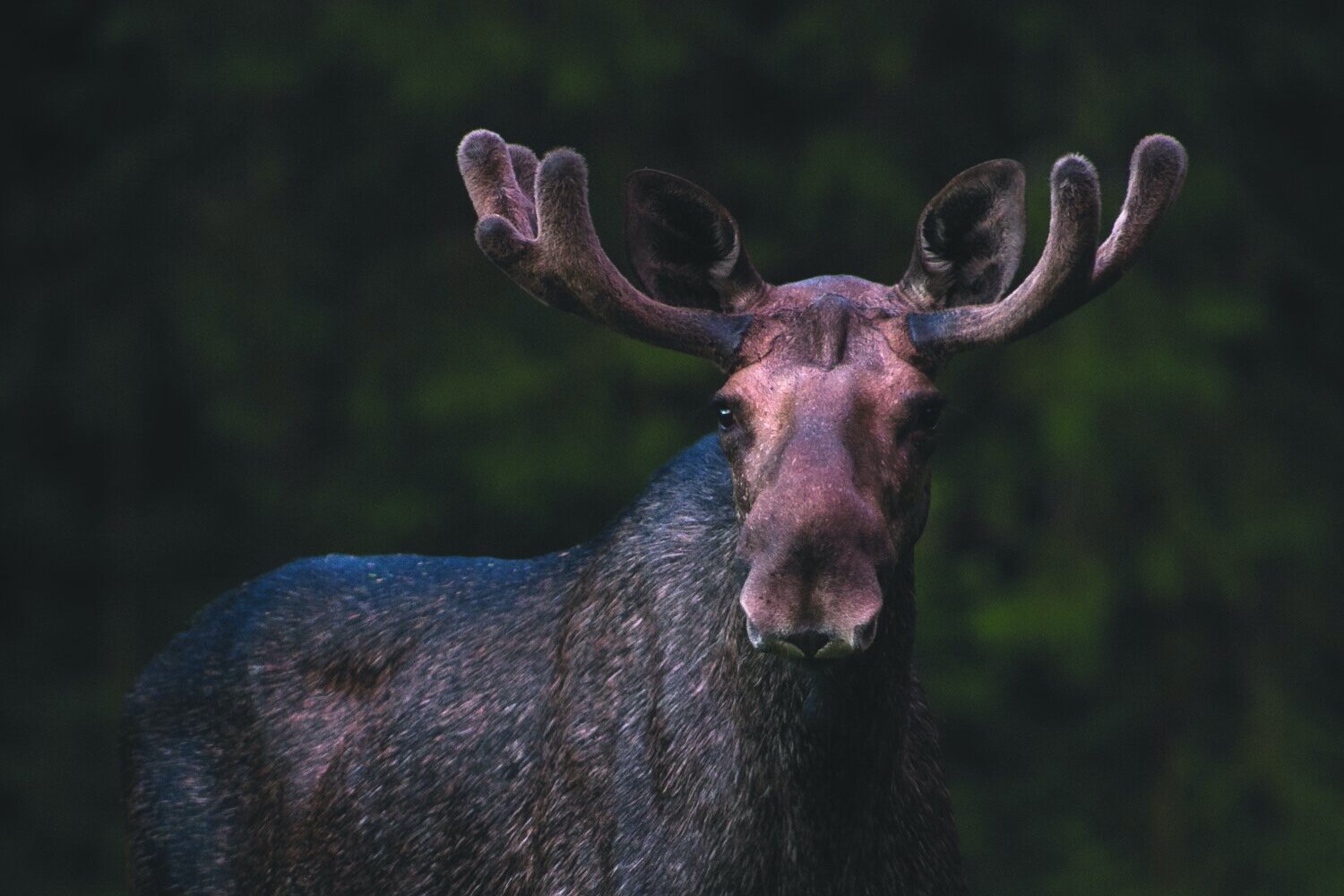
/moose-crossing-the-road-in-alaska--usa-1220036718-a749ca23363547d2bdd80ce0d484e08f.jpg)

Moose can run 35 mph (56 km/h) over short distances and trot at 20 mph (32 km/h) for longer periods.
THE LONG DARK MOOSE SKIN
The flap of skin that hangs below a moose's chin is called a bell, according to National Geographic.Ī moose's wide hooves act like built-in snowshoes, helping the moose walk in the snow. The hump on a moose's back is caused by massive shoulder muscles. This helps the moose more easily jump over things lying in its path. This type of fur helps to insulate the animal from the cold.Ī moose's front legs are longer than its back legs. "It is also true of many wildlife names not of Indian origin - for example: deer, mink and grouse." Other facts "That is true of most Indian names, whether of a tribe, such as the Winnebago and Potawatomi, or of an object, such as papoose," he wrote in a nature bulletin. Dunne, president of the Forest Preserve District of Cook County, Illinois, the plural is the same as the singular in many words that come from Native American languages. The plural of "moose" is "moose" - not "mooses" and not "meese." According to George W.

Hundreds of moose are killed each year in Alaska, which has the highest rate of moose-vehicle collisions in the world. Vehicle-moose collisions pose the greatest danger to the animals, according to Alaska Fish and Game. Adult moose, however, have a high chance for survival. Young moose are prey for bears, wolves and cougars about half do not live beyond 6 weeks, according to ADW. The Caucasian moose was hunted to extinction by the early 19th century. The global population of moose is estimated to be about 1.5 million and increasing. The IUCN's Red List of Threatened Species categorizes moose as "least concern" because they are very widespread and extremely abundant despite fairly intense hunting.

The group says, "Further research is needed before a consensus would support species-level classification." Conservation status While ITIS and some researchers list the American moose as a distinct species, there is still some debate about whether it is a true species ( Alces americanus) or subspecies ( Alces alces cameloides), according to the International Union for Conservation of Nature (IUCN).


 0 kommentar(er)
0 kommentar(er)
